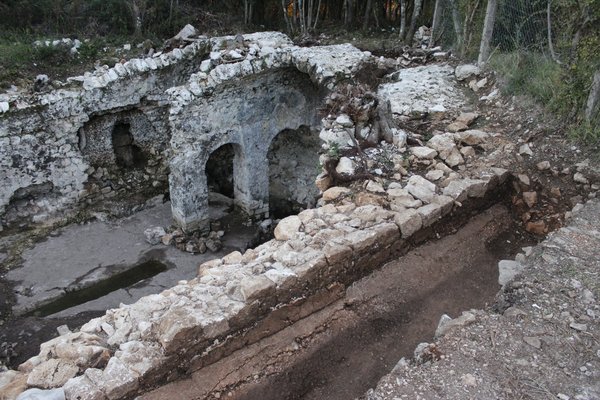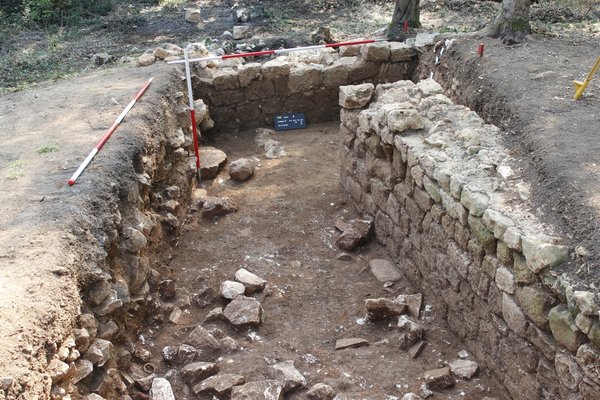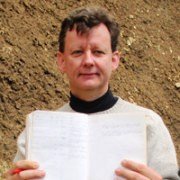The Project is financed by the Croatian Science Foundation (IP-11-2013-2370) and sponsored by the Vrsar Municipality and Montraker Ltd, Vrsar.



Project duration: 1 July 2014 - 30 June 2018
Financing: 467.750 kn
INTRODUCTION
Prehistoric hillforts are characterised by their position on heights with excellent strategic and defensive traits. An impressive number of settlements of this type can be found in Istria, representing an interesting scientific and important cultural phenomenon. Most of the hillforts were established during the Bronze Age, and due to population increase and social stratification they were transformed from simple settlements into pre- and proto-urban centres. While the ethnic identity of the Bronze Age population is still unknown, the ethnically uniform population of the Histri inhabited these settlements during the Iron Age.
After the Roman conquest of Istria most hillforts were abandoned; some of them remained in use, but under different circumstances and conditions which led to their substantial modification. Despite the large number of these sites (240 confirmed, 200 hypothetical), few of them were systematically excavated. Previous research was limited to intra-site interpretation and to targeted field survey. The main goals of this project are to identify anthropogenic landscape change at the time of the conversion of site function, and to obtain new insights on the spatial organisation of settlements and their relationships with the surrounding environment.
Landscape studies, geoarchaeology, topography and archaeology will be integrated under interdisciplinary GIS environment, providing a new holistic interpretation of past landscape dynamics. This research will fill the gap in the understanding of human-landscape interaction and of anthropic transformation of land from Late Prehistory to Roman times. A case study on human impact on landscape will be conducted in the micro-region of Poreč, and will be explained within its broader regional context.


THE PROJECT
An impressive number of later prehistoric hillfort settlements have been found in Istria, where they represent an interesting scientific and important cultural phenomenon. Due to population increase and social stratification, hillforts of the Istrian peninsula were soon transformed from simple settlements into pre-urban and proto-urban ones, and life at most of them continued uninterrupted until the Roman conquest. While the ethnic identity of the Bronze Age population is still unknown, the ethnically uniform population of the Histri inhabited these settlements during the Iron Age. Although most hillfort sites were abandoned after the Roman conquest of Istria, some of them remained in use, but under different circumstances and conditions which led to their substantial modification.
The Roman settlement pattern outside the main urban centres (Pola, Parentium, colonies, founded around the middle of the 1st century B.C.) from the end of the 1st century B. C. develops as a net of villae rusticae, Roman villas, which were centres of agricultural estates. These settlements, of the form well known also from Italy and other Mediterranean and Central and Northern European provinces, were in the plain, on flat land, or sometimes along the coast, near the land that was the source of subsistence and wealth for their owners. Villas were of two main types (luxurious, usually on the coast – villae maritimae, and productive, without luxurious elements) and a combination of the two (with quarters of a rich owner and a large agricultural section). There are at least 250 known sites of the type of villae rusticae on the territories (agri) of Pola and Parentium, and maybe another 100 in northwestern Istria (the area was later attributed to the colony of Tergeste). They are not present in the interior and northern part of Istria, as the economy there was not based on export-oriented agriculture, the production mainly of olive oil and wine as in the colonial agri (Matijašić 1998).
During the passage from Prehistory to the Roman Age (2nd – 1st century B. C.), hillforts were abandoned because their defence infrastructure was not needed any more, as the Roman state provided security for all its inhabitants. The native Histri were either assimilated or resettled in the interior, and their land was taken by the State. During this period the hillforts were gradually abandoned in favour of settlements in the plain.
Of the 440 hillforts and 350 villas in Istria, only about 70 have traces of settlement in Prehistory and Roman Age: 23 in the ager of Pola, 24 in the ager of Parentium, 9 in Northwestern Istria, 14 in Central and Northern Istria. They, and particularly the 24 in the ager of Parentium will be the object of study of the proposed project.


The main objective of the proposed project is to identify anthropogenic landscape transformation processes and to obtain new insights on the spatial organisation of settlements and their relationship with the surrounding environment. By applying an interdisciplinary approach (landscape studies, geoarchaeology, topography, GIS and archaeology)a new holistic interpretation of past landscape dynamics will be presented. The proposed research will fill the gap in the understanding of human-landscape interaction and human transformation of the land, with emphasis on Late Prehistory and Roman Age.
A case study on human impact on landscape will be conducted in the Poreč micro-region. One of the aims of the case study is to explore the relationships between hillfort settlements of the area and their immediate surroundings and explain the results within the broader regional context. Another aim is to explore the direction of natural communication routes between hillforts on the basis of their position.
RESEARCHERS

Klara Buršić-Matijašić, P. I.
- Centre for Interdisciplinary Research in Landscape Archaeology (CIRLA),
- Faculty of Humanities,
- Juraj Dobrila University of Pula

Giovanni Boschian
- Department of Biology
- University of Pisa, Italy

Davor Bulić
- Centre for Interdisciplinary Research in Landscape Archaeology (CIRLA),
- Faculty of Humanities,
- Juraj Dobrila University of Pula

Katarina Gerometta
- Centre for Interdisciplinary Research in Landscape Archaeology (CIRLA),
- Faculty of Humanities,
- Juraj Dobrila University of Pula

Robert Matijašić
- Centre for Interdisciplinary Research in Landscape Archaeology (CIRLA),
- Faculty of Humanities,
- Juraj Dobrila University of Pula

Maša Sakara Sučević
- Koper Regional Museum, Slovenia

Jana Škrgulja
- Department of Archaeology,
- Faculty of Humanities and Social Sciences,
- University of Zagreb

Sandra Šoštarić
- International Commission on Missing Persons (ICMP)
 Pristupačnost
Pristupačnost

